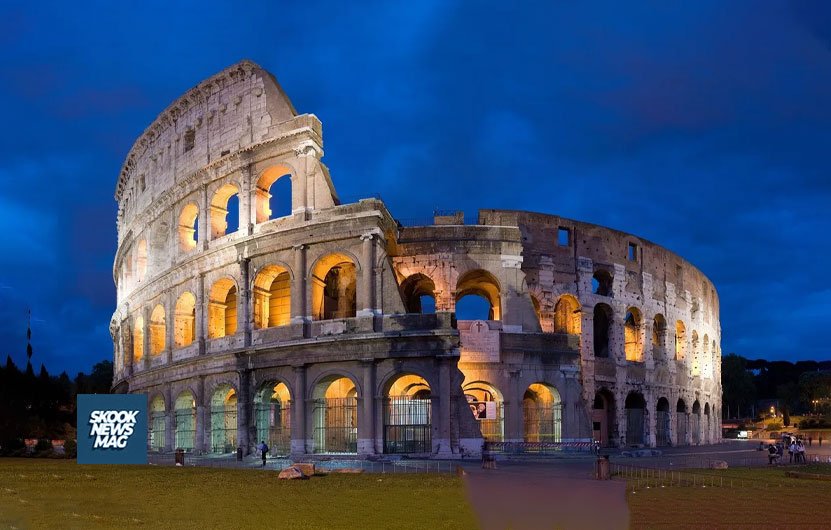What are the Most Famous Things in History?
From ancient wonders to modern marvels, history brims with people, places, events, and inventions that have left an indelible mark. These enduring icons captivate our imagination and reveal the heights of human creativity and ingenuity across the ages. Join me as we explore some of the most renowned treasures spanning thousands of years, unveiling their significance and what cements their mythical status.
This article delves into the most famous things throughout history, illuminating their profound impact and timeless intrigue. Ranging from architectural feats like the Pyramids to artistic genius like the Mona Lisa to pivotal moments like the Moon Landing, we traverse eras and cultures to discover the celebrated artifacts that define our shared heritage.
Overview
Understanding history’s most acclaimed people, places and events provides windows into different civilizations. It reveals the values, aspirations, and capabilities shaping various societies across vast periods. From Ancient Egyptian ingenuity to Renaissance creativity to Space Age innovation, renowned icons emerge that capture our collective imagination and admiration. They transform fields like architecture, art, politics, religion, science and technology. Their legendary status also stems from the air of mystery or controversy surrounding them. What unifies these historical treasures is how they inspire future generations while encapsulating the spirit of their age. Join me as we chronicle some of the most illustrious innovations, constructions, masterworks, and breakthrough moments spanning centuries. This sweeping journey through the tides of time will highlight why these cultural treasures still quicken our pulse and ignite our curiosity today.
Ancient Wonders
The Great Pyramids of Giza
Towering like titanic sentinels on the Giza plateau near Cairo, the pyramids of Khufu, Khafre, and Menkaure rank among history’s most splendid and puzzling achievements. Built during Egypt’s Old Kingdom as pharaohic tombs, these stone behemoths have inspired awe for over 4,500 years. Their geometry and orientation to constellations reveal the scientific prowess underpinning their planning and construction over 80 years. Leveraging pulleys, ramps, and tens of thousands of laborers, the pyramids embodied Egypt’s economic might and bureaucratic efficiency.
Originally sheathed in polished white limestone, the Giza pyramids formed a dazzling spectacle gleaming under the scorching desert sun. Stripped of their outer casing stones by later generations, their core masonry still hints at their former majesty. The greatest pyramid of Khufu rises to almost 500 feet, boasting 2.3 million stone blocks weighing 6 million tons. Khafre’s pyramid appears taller due to its elevation and the illusion of its intact peak. From feats of engineering to networks of concealed chambers and passages, the pyramids have spawned myriad theories about their construction and purpose.
The rich symbolic value and technical brilliance of the Giza pyramids cemented their status as one of antiquity’s Seven Wonders. They inspired similar royal monuments across Mesoamerica and served as eternal portals for pharaohs to reach the divine realm. The pyramids also catalyzed Egyptology’s birth after Napoleon’s expedition in 1798. Their form and alignment have even spawned modern myths about their extraterrestrial origins. Still dominating Egypt’s landscape after 45 centuries, the Giza pyramids remain enduring emblems of pharaonic grandeur.
The Colosseum
Rising from Rome’s city center, the mammoth Colosseum amphitheater stands as an iconic monument to Imperial Rome’s cultural clout. Construction began under Emperor Vespasian around 70 CE and was completed a decade later under Titus. This elliptical arena could host over 50,000 roaring spectators for gladiatorial combats, mock naval battles, and wild beast hunts involving thousands of warriors and exotic creatures. The Colosseum’s design reflected Rome’s engineering prowess with stone and concrete. Vaults and architecture using Roman arches supported tiers of seating while hypogeum tunnels and lifts enabled spectacular set pieces.
As the site of Roman public entertainment for four centuries, the Colosseum was steeped in symbolism. Triumphant generals channeled war spoils to fund lavish inaugural games, cementing their prestige. Spectacles also forged unity between Rome’s social classes. Mock sea battles even reproduced enemy nations like Egypt or Carthage for audiences to cheer against. Animal hunts demonstrated Imperial might scouring the world’s fauna for amusement. Gladiatorial combats also instantiated notions of valor as condemned men battled to redeem their honor.
Earthquakes and stone plunderers have ravaged much of the Colosseum since the Roman era. However, its broken bulk still packs a visual punch, recalling the arena’s glory days. Its classical order and attic form inspired European architecture for centuries. Italian nationalists also rallied around restoring it as an assertion of national heritage during the 19th century. In modern times, the Colosseum endures as an enduring symbol of Rome and its remarkable civilization.
Artistic Marvels
Leonardo da Vinci’s Mona Lisa
Behind bulletproof glass in the Louvre Museum hangs a poplar wood panel barely 21 by 30 inches – and yet Leonardo da Vinci’s Mona Lisa possesses an allure that has captivated viewers for over 500 years. Believed to portray Lisa Gherardini, wife of Florentine silk merchant Francesco del Giocondo, the portrait subverts conventions for depicting women in 16th-century Florence. Clad in understated robes against an imaginary landscape, Mona Lisa’s coy smile and enigmatic gaze seem to invite – and rebuff – the viewer. Speculation abounds concerning the model’s identity and the reason behind her cryptic expression.
Leonardo revolutionized techniques like sfumato, chiaroscuro, and aerial perspective to lend the Mona Lisa its ethereal, glowing skin and depth. He pioneered oil glazes across 20 sublayers of paint and varnish for subtle transitions between light and shade. Her eyes seem to follow viewers while her smile appears to fluctuate. Da Vinci labored on the painting for years, his meticulous methods stoking its mystery. The portrait’s revolutionary style and symbolism amplify its fame.
Stolen in 1911 by former Louvre employee Vincenzo Peruggia, the Mona Lisa survived two years hidden in his Paris apartment before its triumphant return to the museum. Its theft and European tour cemented its status as the world’s most famous painting. From Dadaist mutilations to sensational heist plots to pop art reproductions, Mona Lisa fever has scarcely abated across the centuries. While countless portraits predate it, da Vinci’s alluring icon remains in a class of its own.
Michelangelo’s Sistine Chapel
Sprawling across the ceiling and upper walls of the Vatican’s Sistine Chapel, Michelangelo’s ornate frescoes stand as one of history’s preeminent artistic achievements. Commissioned in 1508 by Pope Julius II, this epic painting project was initially mired in disputes over its concept and feasibility. Using the architectural elements framing the chapel’s interior, Michelangelo choreographed an elaborate visual feast. A geometric illusion of space brims with biblical scenes from the Book of Genesis and images of prophets and pagan sibyls. At the heart of the scheme lies Michelangelo’s iconic image of God extending a spark of life toward Adam.
Four years of intense labor saw Michelangelo devise his specialized techniques for fresco and plaster. Toiling on scaffolding under the chapel’s ceiling, he relied on younger artists to grind colors and tend to the plaster’s absorption rates. The Sistine Chapel’s oppressive height and curvature required him to radically distort the frescoes’ lower portions to enhance visibility for viewers below. The final paintings boasted unrivaled mastery of proportion and light, fusing architecture, sculpture, and painting while amplifying religious symbolism. Michelangelo later painted the spectacular Last Judgment on the altar wall before he died in 1564.
As the papal conclave’s venue, the Sistine Chapel carries profound meaning for Catholicism. Its elaborate fusion of images and decoration encapsulated the Renaissance spirit – a glorious flowering of human potentiality. Michelangelo’s prowess in painting such elaborate large-scale frescoes was unprecedented, establishing the Sistine Chapel as the towering pinnacle of Renaissance art. Its sublime beauty continues drawing over 5 million visitors each year.
Historical Events
The Declaration of Independence
Scrawled on parchment in elegant cursive, the United States Declaration of Independence marked a watershed for democracy. Drafted in early July 1776 by Thomas Jefferson and the Continental Congress, it outlined grievances against King George III’s tyrannical rule. Championing Enlightenment ideals, the text’s momentous second sentence enshrines humanity’s innate equality and rights to liberty and self-government. After extensive debate and revision focusing on unanimity and concision, the Congress formally adopted the document on July 4, kindling a revolutionary spark towards independence.
The Declaration of Independence enunciated ideological arguments justifying rebellion against British control as a moral imperative.
It interwoven the intellectual force of Enlightenment thinkers like John Locke with rhetoric decrying taxation without representation and eroding colonial rights. As the first of America’s founding documents, the Declaration enshrined the nation’s guiding principles. It helped secure crucial French military support for the burgeoning revolution, inspiring freedom movements worldwide too.
Fifty-six delegates signed the Declaration, pledging their lives and fortunes behind its seditious words—established leaders like Benjamin Franklin and John Hancock alongside lesser-known figures like Button Gwinnett. While failing to abolish slavery, the text lit a fuse for egalitarianism that drove abolitionism’s rise. Abraham Lincoln later hailed the proposition “that all men are created equal” as America’s defining “abstract truth”, one that guided national renewal during the Civil War. Indeed, the Declaration of Independence established ideals summoning the nation to realize greater justice and inclusion.
The Moon Landing
When Apollo 11 astronauts Neil Armstrong and Buzz Aldrin stepped onto the Moon in 1969, the occasion marked a soaring pinnacle of exploration. NASA’s goal of landing men on the Moon by the decade’s end catalyzed a thrilling space race with Cold War adversaries. The Apollo program marshaled an industrial-scale mobilization fusing government and private sectors. Teams across America collaborated on inventing and building technologies enabling humans to reach another celestial body.
The audacious yet methodical ambition culminating in the Moon landing both channeled and fulfilled Kennedy-era romanticism about heroic questing and existential conflict. NASA’s 400,000 personnel and contractors overcame daunting challenges related to propulsion, computing, life support systems, and materials science to achieve the lunar milestone ahead of the Soviets. The Saturn V rocket exceeded heights of 36,000 feet powered by over 7.5 million pounds of thrust. Improved television relayed footage of Armstrong descending onto the barren Sea of Tranquility, transforming audiences worldwide into vicarious eyewitnesses.
As an epochal event broadcast globally, the Moon landing forged a sense of human unity and pride in scientific progress. It spurred environmental consciousness upon viewing Earth’s fragility from space while inspiring artists, musicians, and dreamers. The planting of American flags heralded geopolitical glory for democratic ideals too. Half a century later, the fading Moonwalkers still kindle our longing for awe, discovery, and pushing boundaries. A human footprint endures upon another world bearing witness to a transcendent triumph of intellect and imagination.
Technological Innovations
The Gutenberg Bible
Johann Gutenberg’s printing press ushered a communications revolution across Renaissance Europe. Harnessing pioneering techniques in metallurgy and molding, his mechanized press introduced fast, cheap dispersal of texts and images. This powerful invention also drove massive cultural shifts as printing accelerated the spread of knowledge, setting intellectual and religious revolutions in motion. Among the first books emerging from Gutenberg’s workshop around 1455 was his eponymous Bible.
This Latin translation drew from Saint Jerome’s seminal fourth-century Vulgate edition, rendering the Old and New Testaments alongside various prefatory letters. Gutenberg’s Bible fused calligraphy with black-ink block printing, simulating manuscripts with metal type rendering sharp, crisp script. Several hundred copies reached circulation, their gradual dispersal signaling a seismic shift in textual abundance. As output climbed, printed works supplanted laborious handwritten parchments.
Gutenberg’s Bibles demonstrated the seismic potential of movable type printing through their ubiquity and prominence in church and academic circles across Europe. They launched reformations in technology, religion, and human thought. As literacy rates climbed thanks to printed books, seminal works both sacred and secular spread as never before while Latin’s dominance dwindled amidst vernacular works. Propelling information’s broad diffusion, Gutenberg’s printing innovations made knowledge less confined and hierarchical. Instead of speculating downward from clerics or rulers, print culture nurtured new realms of open intellectual discourse and questioning.
The Internet
From rectifying Y2K catastrophes to dot-com manias and wayward memes, the Internet has profoundly reshaped modern societies within decades. Emerging from American military networks, the decentralized digital infrastructures of the World Wide Web have transformed work, education, finance, politics, and culture – almost every domain. This multifaceted metamorphosis continues accelerating into the future.
Originally called ARPANET, the Internet took shape in the 1960s as engineers sought robust data exchange methods. Packet switching allowed messages to use multiple paths, enabling the earliest incarnation of the Internet to withstand Cold War attacks. By the 1980s, academic researchers communicating via early Internet functions birthed innovations like Usenet, FTP, and email. British scientist Tim Berners-Lee developed the World Wide Web protocol in 1989 at CERN, introducing user-friendly browsing for accessing documents across dispersed servers.
As personal computers and digital networks spread commercially in the 1990s, the Internet turned mainstream through services like Google, Wikipedia, Facebook, YouTube, and Netflix. It redefined prevailing paradigms for information access, education, shopping, advertising, and entertainment. Internet penetration has surged from around 1% of the world population in 1995 to over 60% today. Smartphones now enable billion-strong user bases across social networks and messaging apps.
Yet this digital transformation continues engendering pressing questions about privacy, autonomy, governance, and human relations polarized through ideological and demographic bubbles. By connecting humanity through ubiquitous dataflows, the Internet’s rise carries both splendor and shadows as its full impact unfolds.
Conclusion
In this sweeping survey across history, we explored revolutionaries, relics, and watersheds cementing their mythical reputations through superlative genius and impact. From antiquity’s feats of engineering known as the Giza pyramids to gladiatorial grounds like Rome’s Colosseum and visionary paintings including the Mona Lisa, famous artifacts capture aesthetic and technical sophistication while revealing their cultural context. Pivotal events like American independence, astronauts walking the Moon and Gutenberg bringing movable type printing signaled paradigm shifts with ideological and practical legacies still unfolding today. Recent exponential leaps through computing and the Internet spur perpetual change, even as their full consequences remain emerging.






